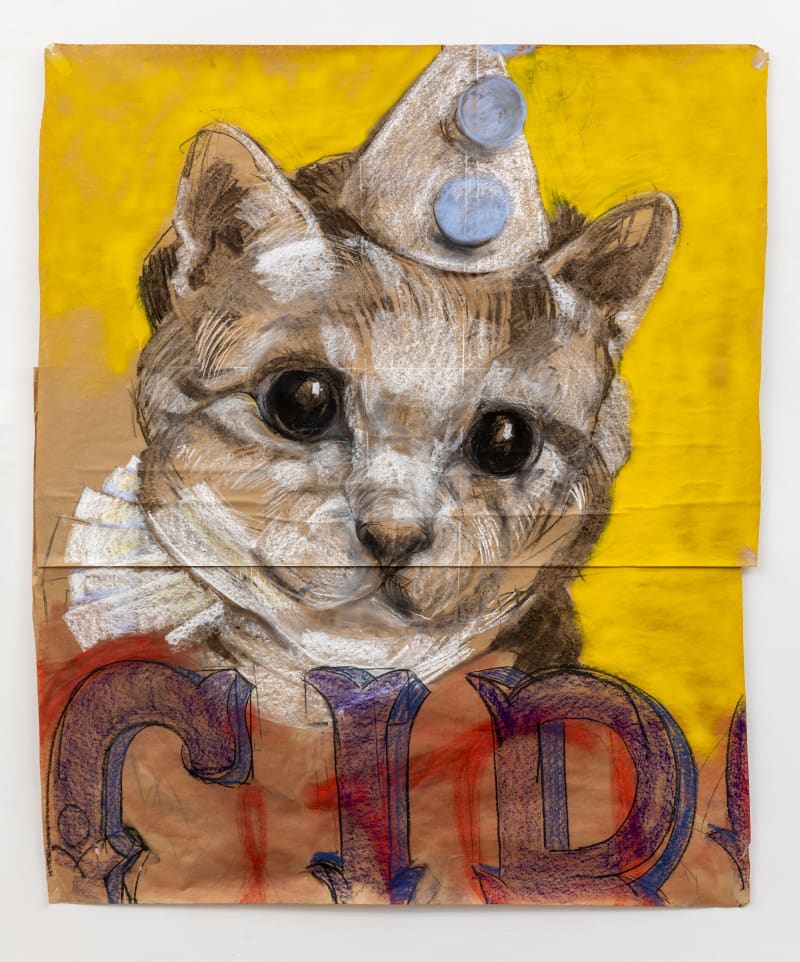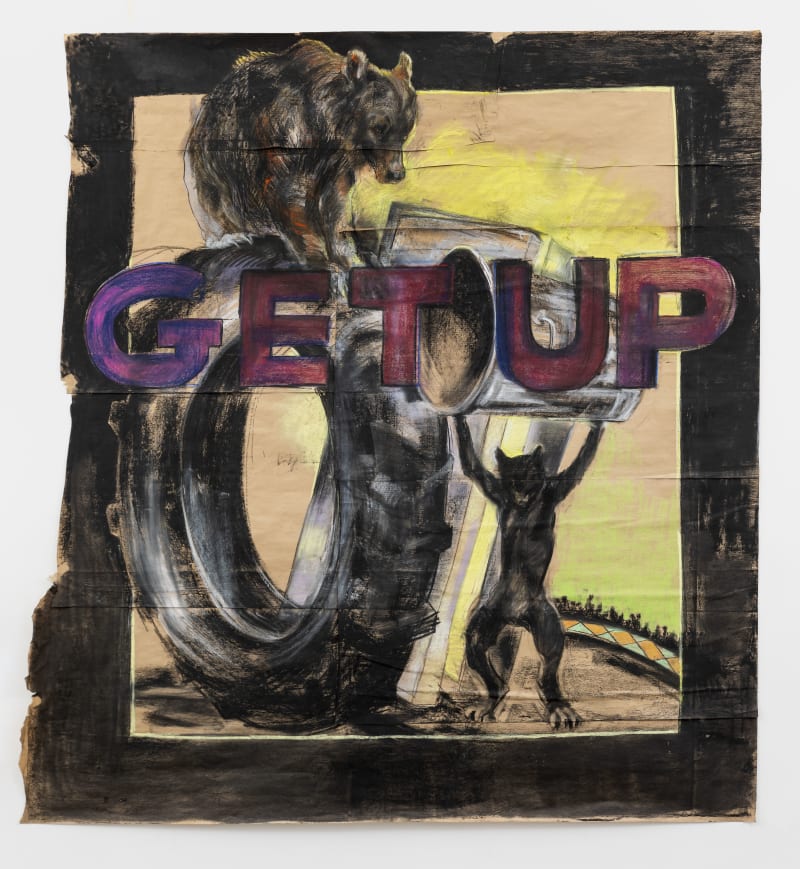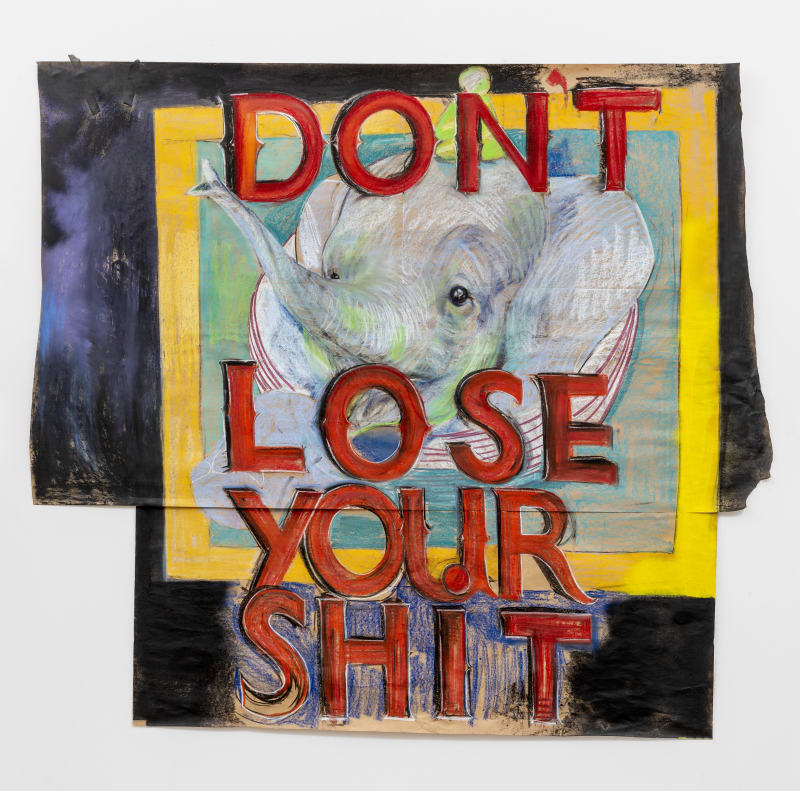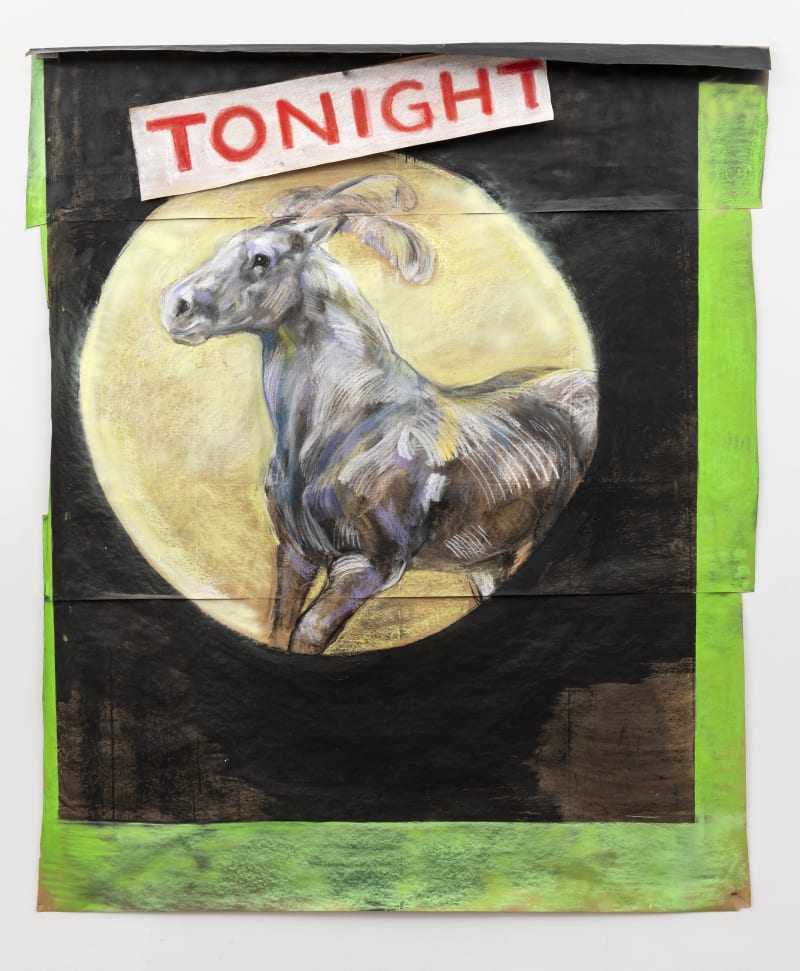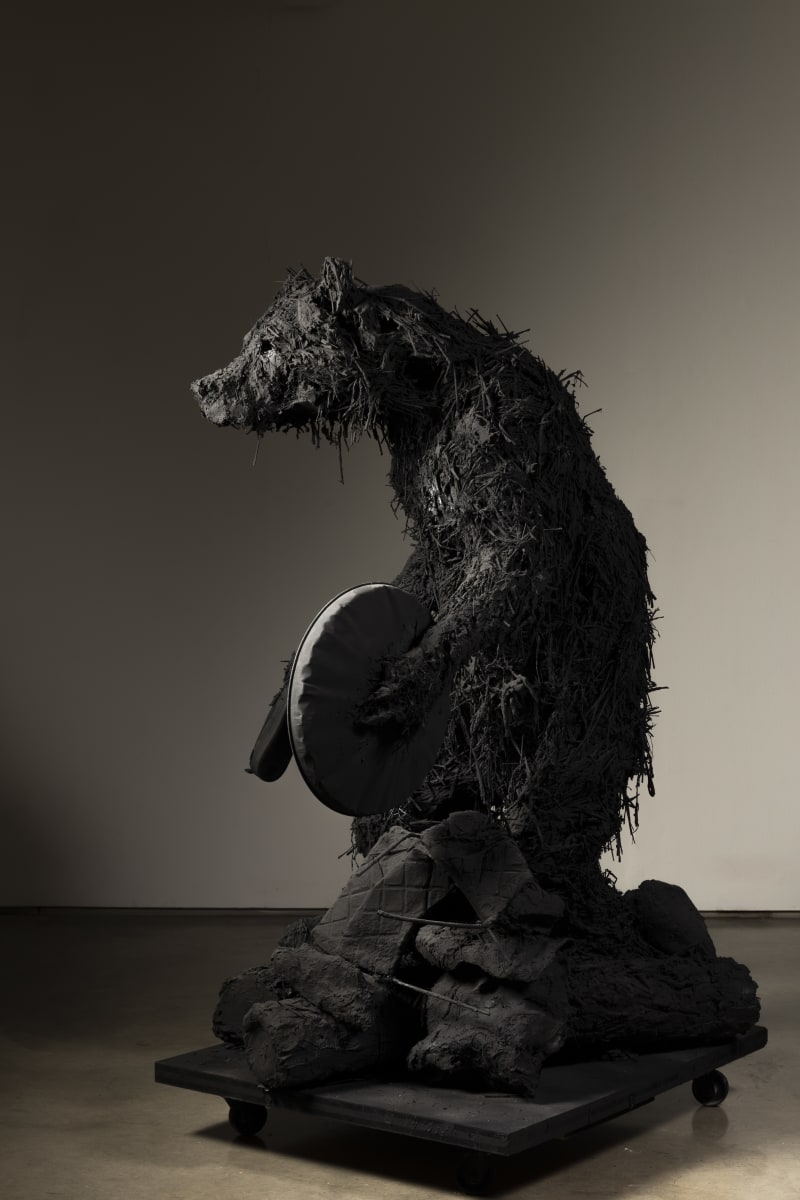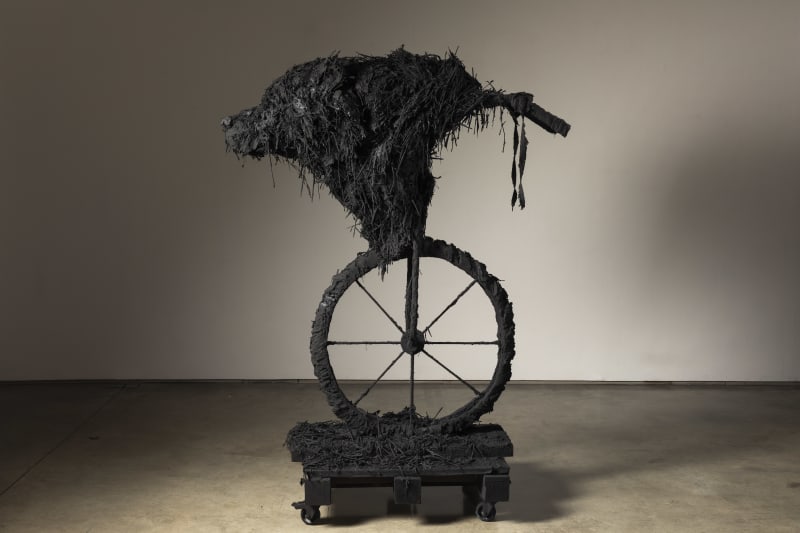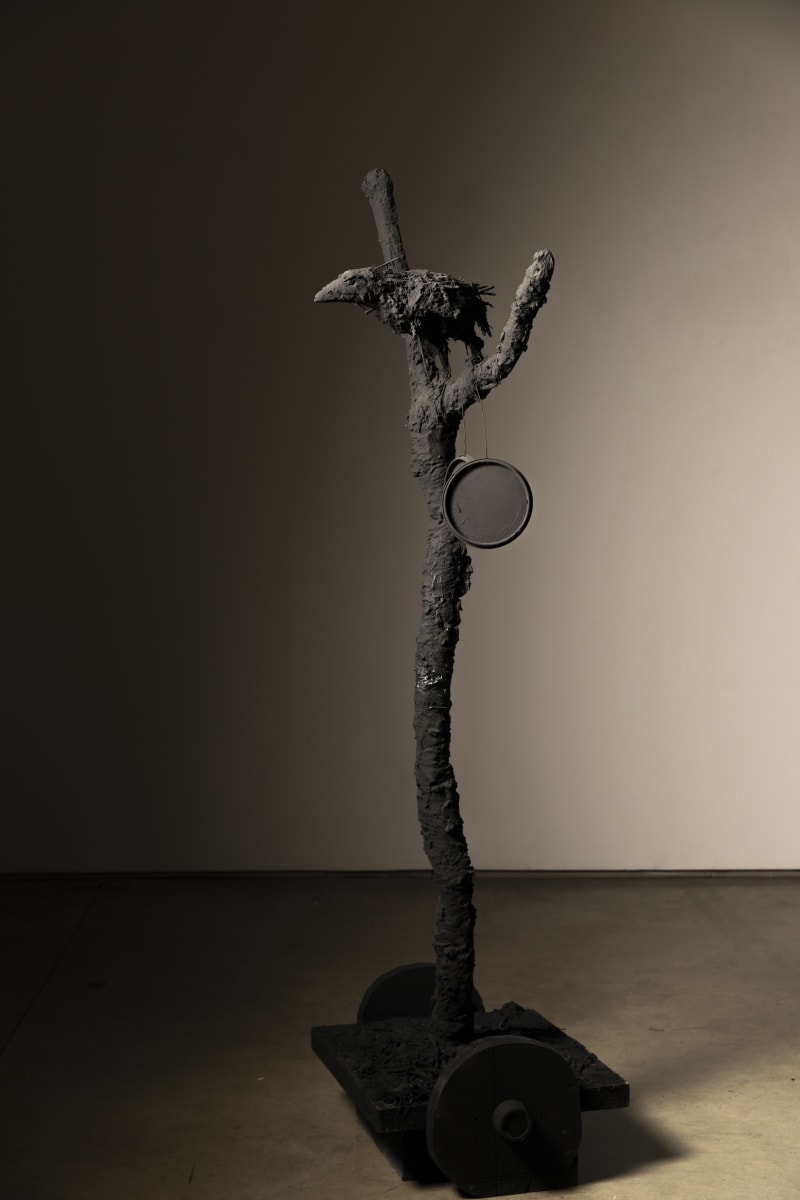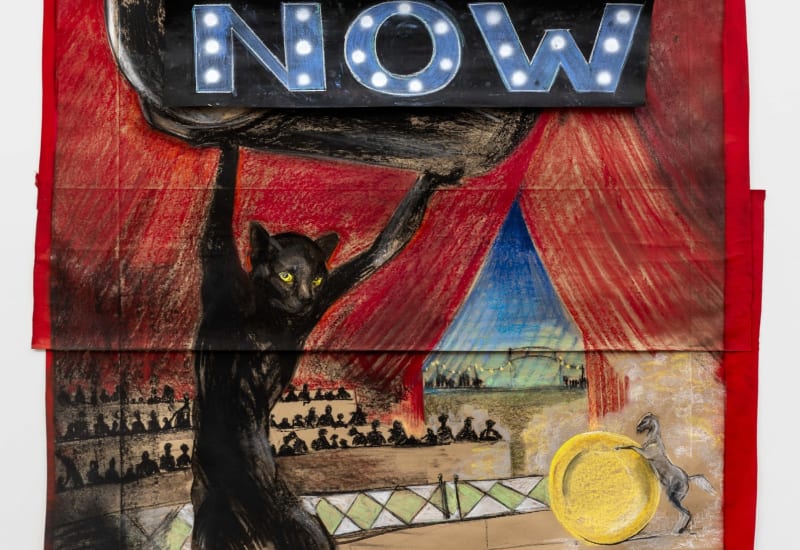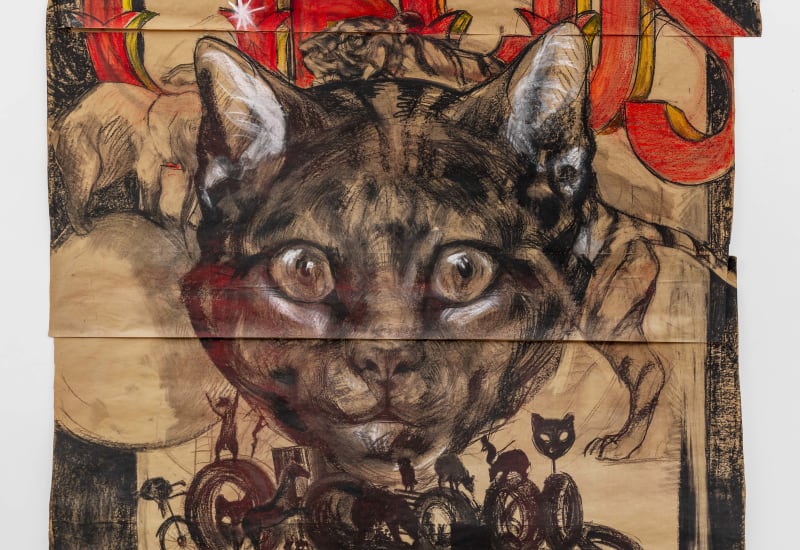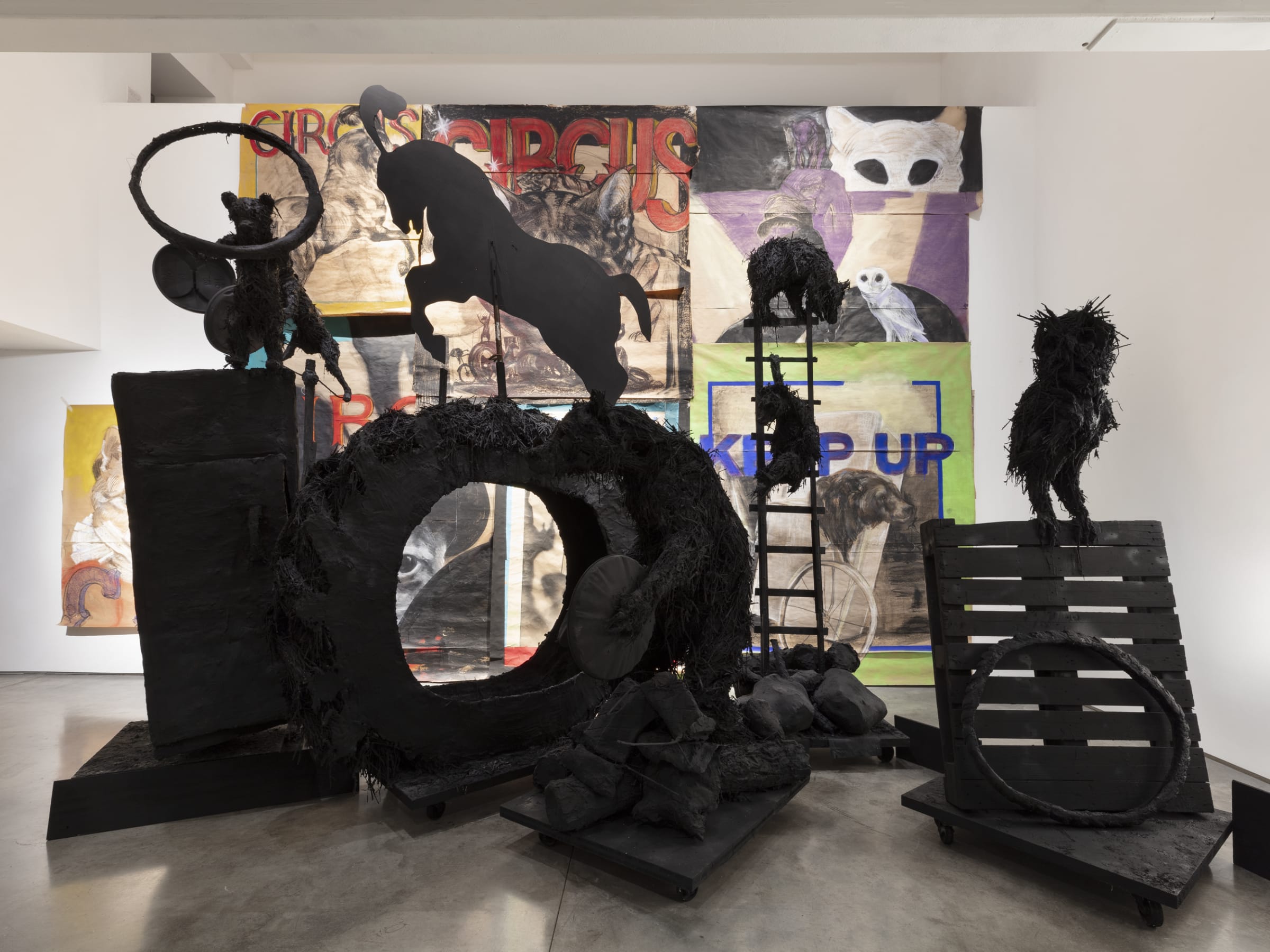
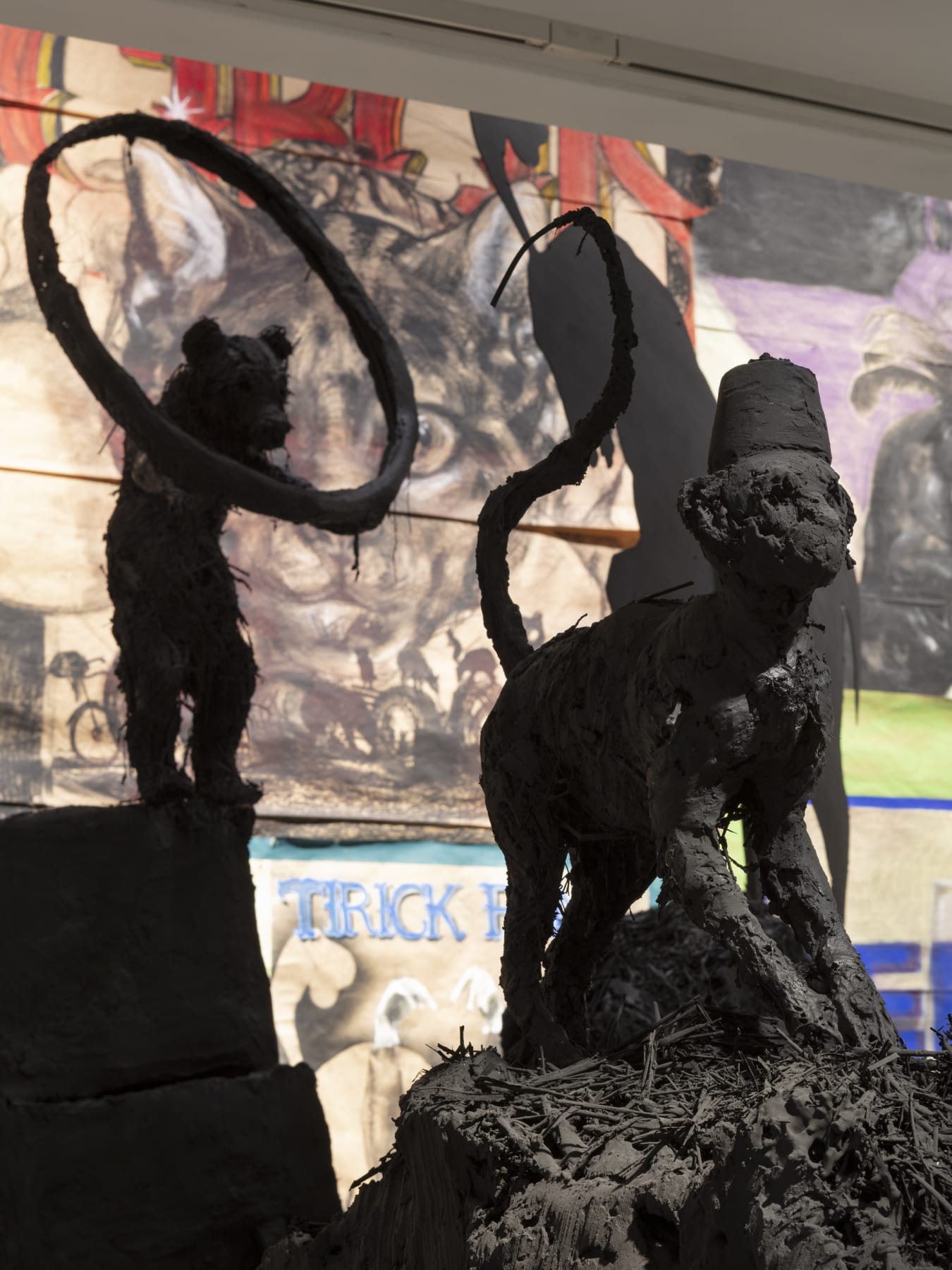



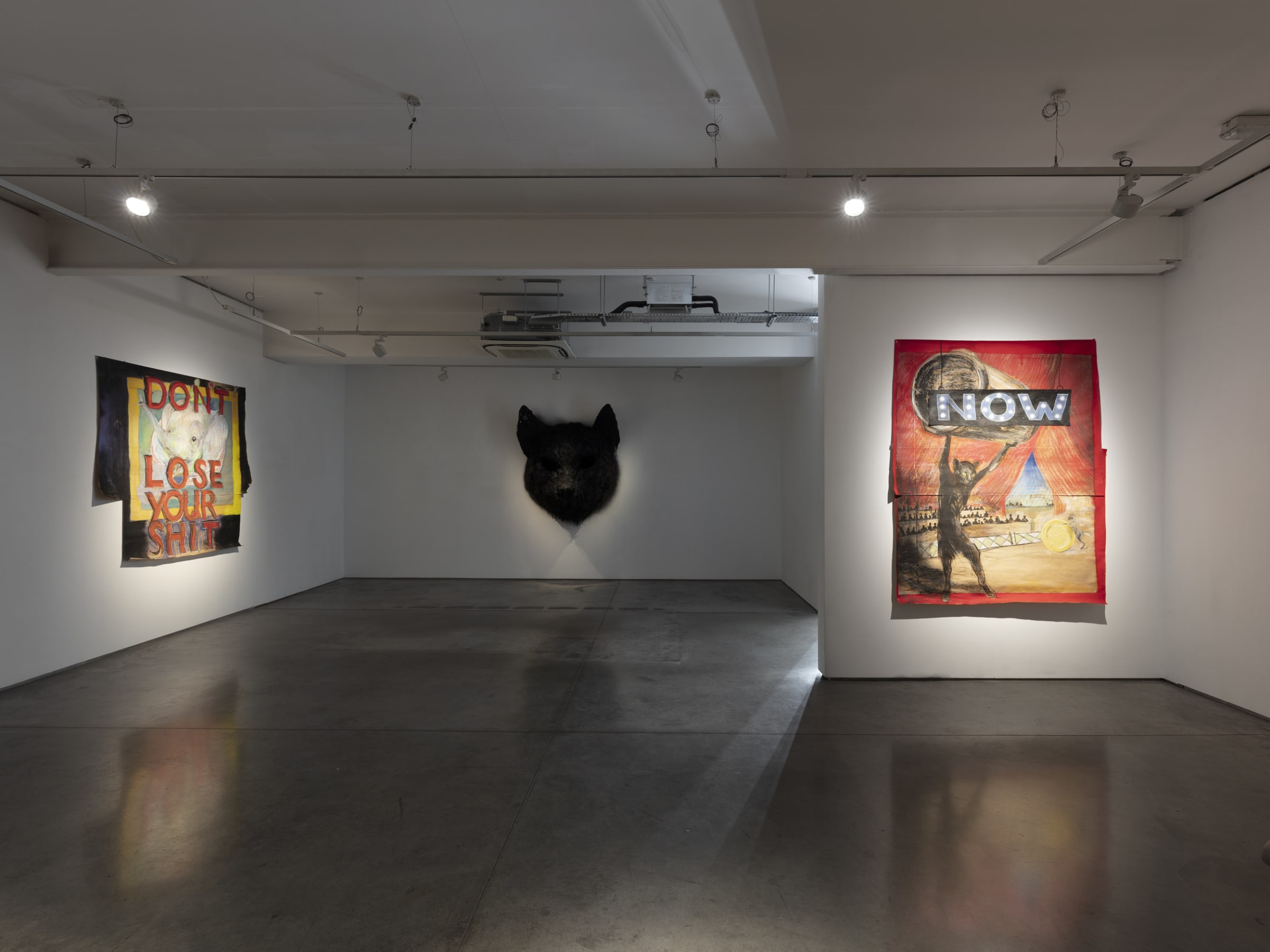

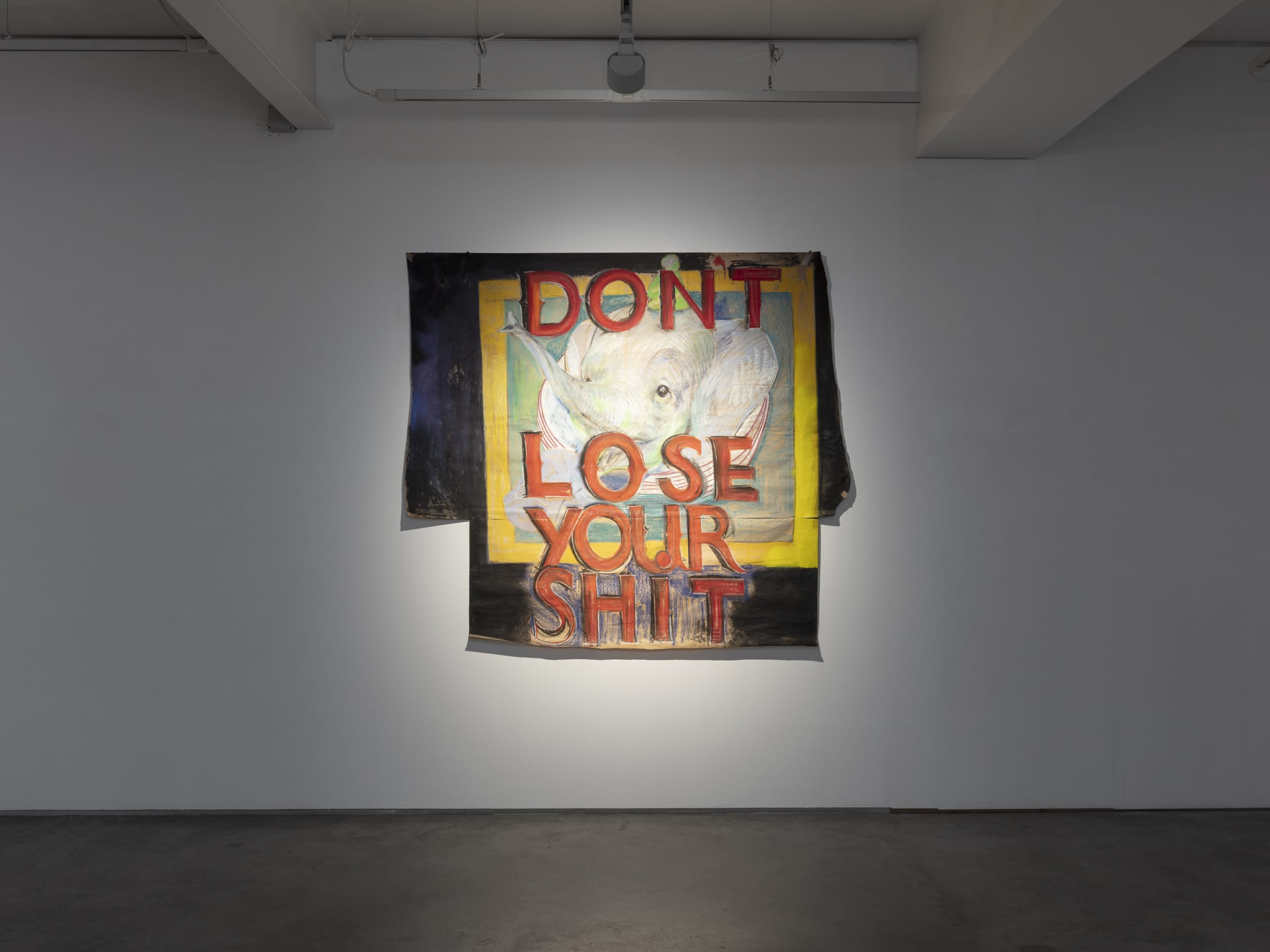
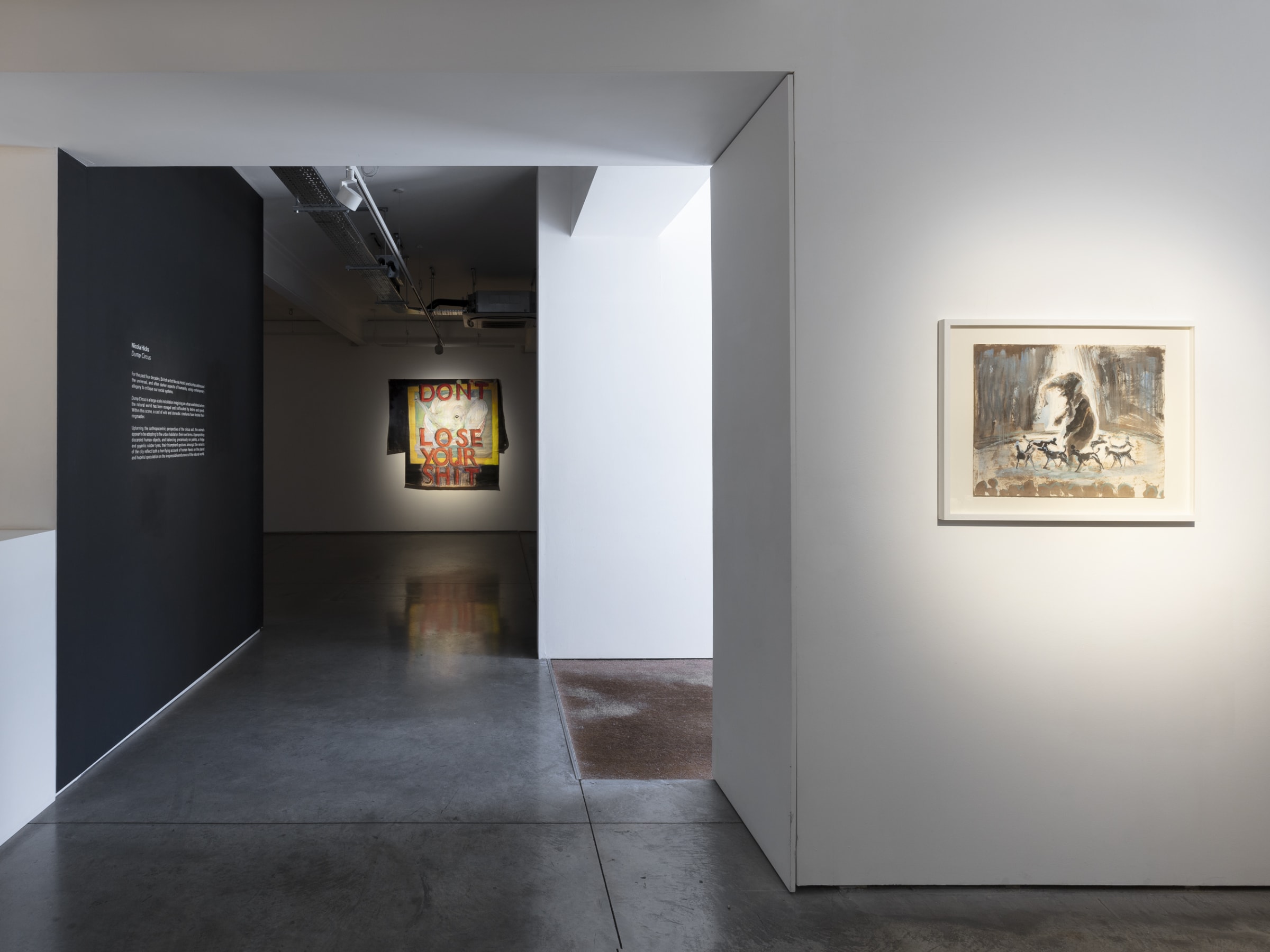

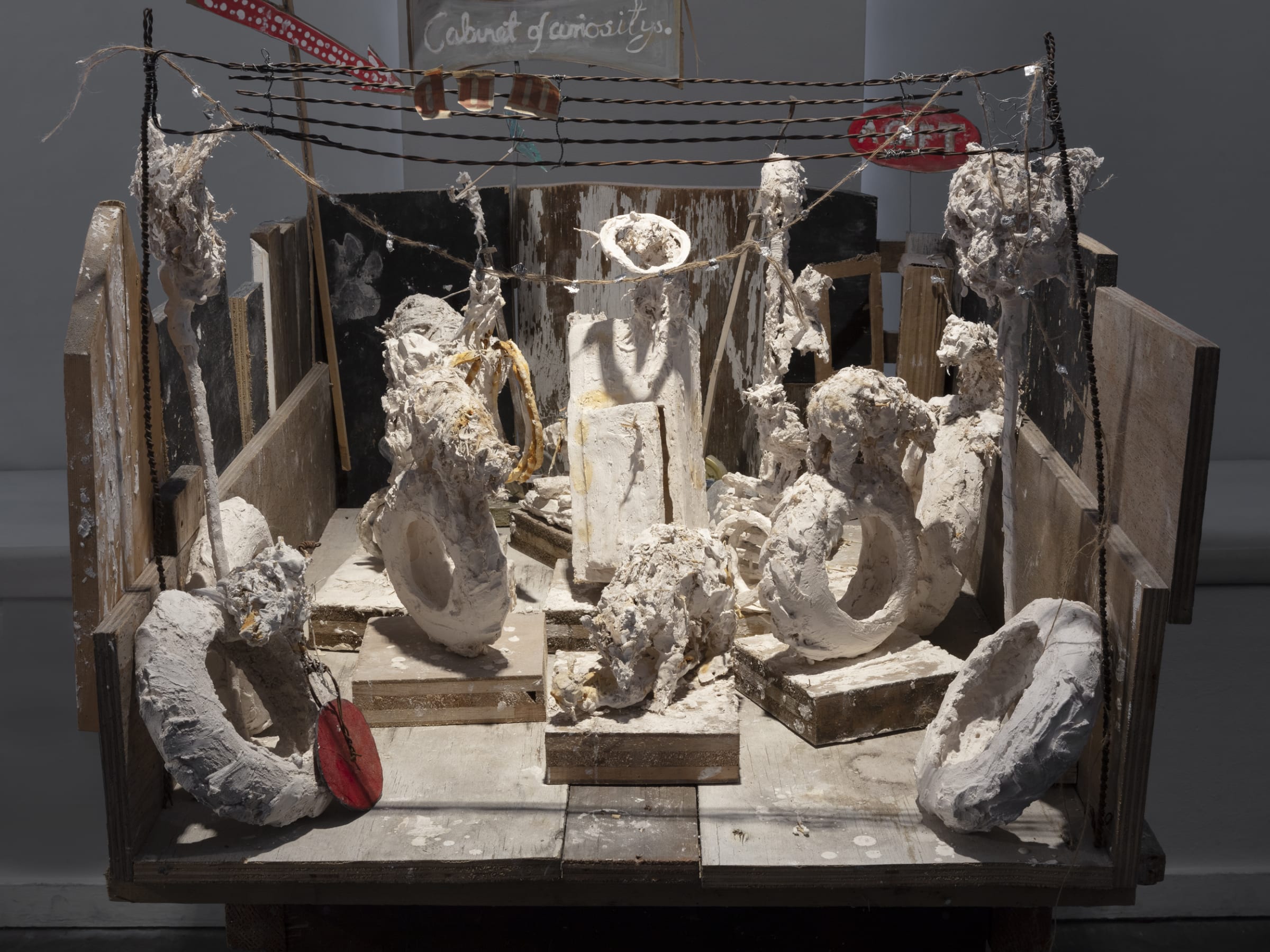
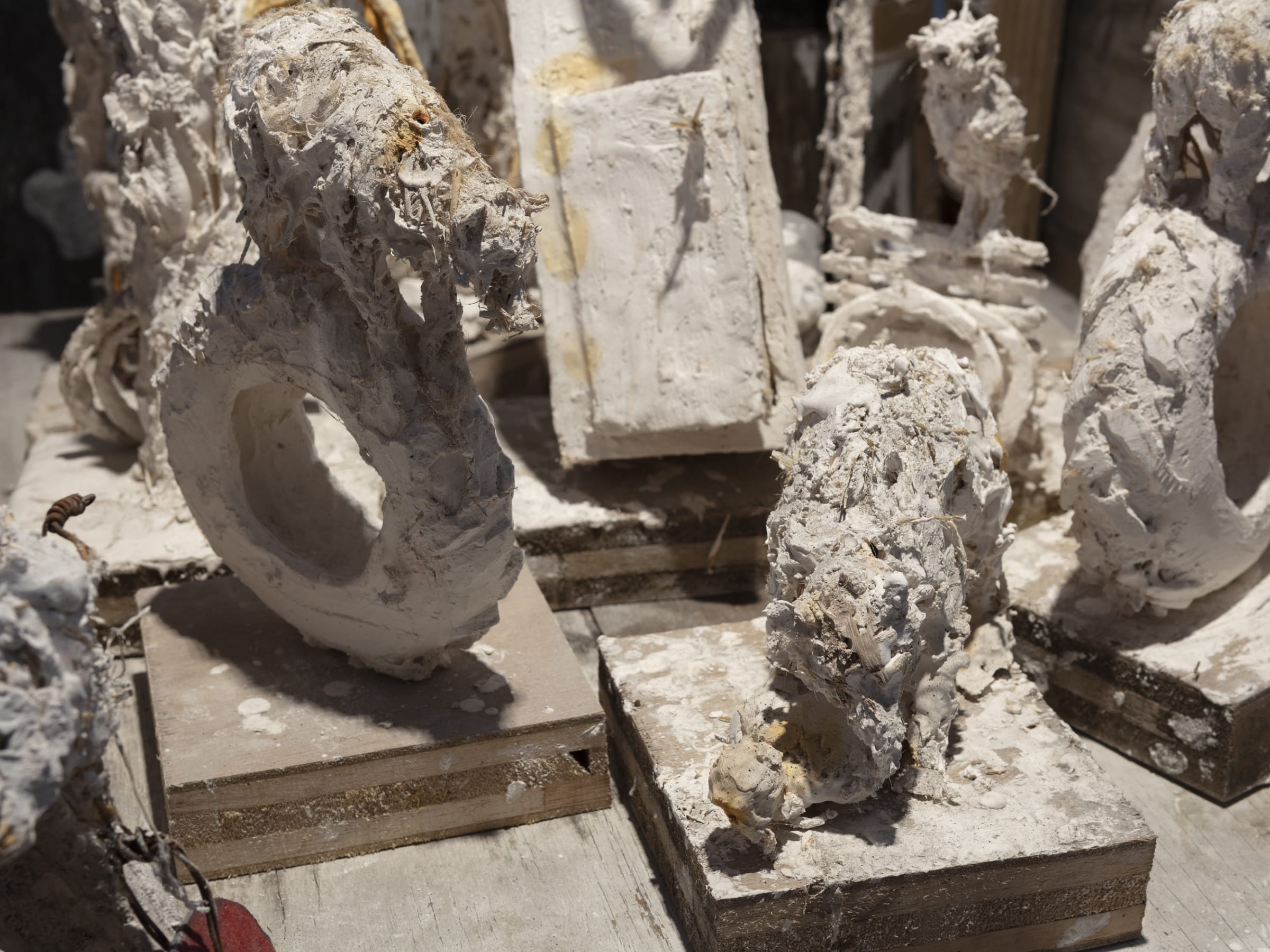

Overview
For the past four decades, British artist Nicola Hicks’ practice has addressed the universal, and often darker aspects of humanity, using contemporary allegory to critique our social systems.
Dump Circus is a large-scale installation imagining an urban wasteland where the natural world has been ravaged and suffocated by debris and greed. Within this scene, a cast of wild and domestic creatures have bested their ringmaster.
Upturning the anthropocentric perspective of the circus act, the animals appear to be adapting to the urban habitat on their own terms. Appropriating discarded human objects, and balancing precariously on pallets, a fridge and gigantic rubber tyres, their triumphant gestures amongst the remains of the city reflect both a horrifying account of human havoc on the planet and hopeful speculation on the irrepressible endurance of the natural world.
A series of works on paper, recalling the exuberant designs of circus posters, introduce the characters performing in the surrounding tableau. Their multi-layered construction communicates a sense of urgency, alongside defiant slogans calling for change in works such as Keep Up, Get Up, and the enigmatically playful, Now.
For the past four decades, British artist Nicola Hicks’ practice has addressed the universal, and often darker aspects of humanity, using contemporary allegory to critique our social systems.
Dump Circus is a large-scale installation imagining an urban wasteland where the natural world has been ravaged and suffocated by debris and greed. Within this scene, a cast of wild and domestic creatures have bested their ringmaster.
Upturning the anthropocentric perspective of the circus act, the animals appear to be adapting to the urban habitat on their own terms. Appropriating discarded human objects, and balancing precariously on pallets, a fridge and gigantic rubber tyres, their triumphant gestures amongst the remains of the city reflect both a horrifying account of human havoc on the planet and hopeful speculation on the irrepressible endurance of the natural world.
A series of works on paper, recalling the exuberant designs of circus posters, introduce the characters performing in the surrounding tableau. Their multi-layered construction communicates a sense of urgency, alongside defiant slogans calling for change in works such as Keep Up, Get Up, and the enigmatically playful, Now.
Nicola Hicks was born in London in 1960 and studied at Chelsea School of Art and the Royal College of Art. In 1995 Hicks was awarded an MBE for her contribution to the visual arts. Hicks’ sculpture and drawings have been exhibited in numerous international museums and galleries. Selected solo exhibitions include Sorry, Sorry Sarajevo, St Paul’s Cathedral, London; Sculpture by Nicola Hicks at the Yale Center for British Art, New Haven, United States; and her work was included in The Universal Addressability of Dumb Things, curated by Mark Leckey, as part of the Hayward Touring series at venues across the UK. Hicks has numerous works on public display including the Crouching Minotaur at Schoenthal Monastery, Switzerland and Muscle and Blood at 600 Lexington Avenue, New York. A major monograph Nicola Hicks: Keep Dark (Elephant) was published in 2017, with accompanying texts written by David Mamet, Candia McWilliam, Max Porter, Matilda Pye, Will Self and Patterson Sims.
